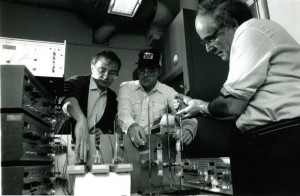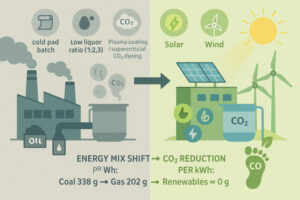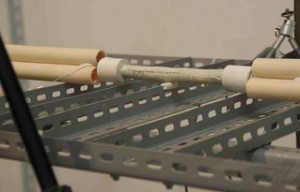Energy category in stepchange innovations blog
The textile industry is a major contributor to global CO₂ emissions due to its intensive energy use, particularly in dyeing and finishing processes. This article explores practical strategies and innovative technologies that can dramatically improve energy efficiency and lower the carbon footprint in textile production. From switching to renewable energy sources and optimizing dyeing methods, to adopting modern machinery and promoting recycling, the industry has numerous opportunities to enhance sustainability. Learn how leading-edge solutions are paving the way for a cleaner, greener future in textiles.
Part 2 of the analysis of the e-cat Lugano report, looking deeper into the issue of the isotope changes in nickel and lithium, reaction kinetics and the implications for Industrial Heats´ patent situation.
A group of Swedish and Italian scientists published technical papers that seem to confirm excess heat in a low energy nuclear reaction (LENR) device called e-cat. The scientists found in the ash of the spent fuel dramatic isotope changes in nickel (Ni) and lithium (Li) without any harmful radiation. If this finding would be correct - LENR as transmutation of elements without radiation - it would turn our present knowledge of nuclear physics on its head- a scientific sensation.
Climate change due to global warming continues to be a major threat for the world, according to the recently released IPCC report, the leading source for the assessment of climate change. Despite declining rate of temperature increase, the world´s leading climate scientists re-enforce warnings on global warming.

Solar flares hit the Earth
Solar Flares hit the Earth 2013, in its 11 year peak cycle, potentially causing serious damage, as much as 2 trilion USD of damage to the power grid

Stanley Pons, Marvin Hawkins and Martin Fleischmann, 1989. (Photo: University of Utah)
e-cat - A detailed scientific analysis of the Rossi-Focardi energy catalyser (e-cat), looking at the evidence for excess energy, nuclear reaction products, and the theoretical model.
Lack of independent verification, issues with patents and trademarks, questionable scientific basis - the e-cat dream for free and abundant energy is fading
website shutdownrossi.com announced smoking guns to discredit the e-cat as a hoax. Rossi asking 400 tsd USD payment for e-cat order
MIT professor Peter Hagelstein reportedly keeps running a LENR device since 6 months, and the device energy output is 14
Rossi reports significant progress on a working device operating at 600 degrees. This may take the e-Cat to levels where it could produce superheated steam as used in conventional electrical generation








